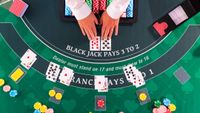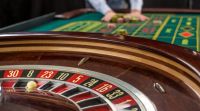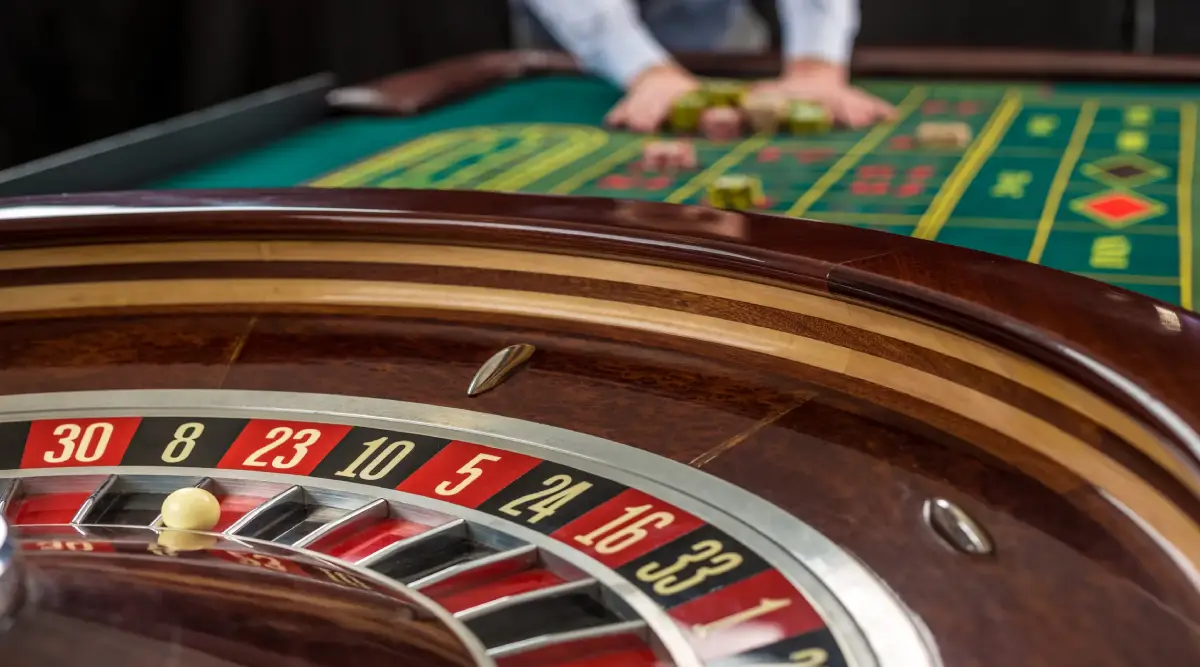Explore web search results related to this domain and discover relevant information.

Mathematics is our best friend in sports betting. This guide will help you apply the Fibonacci Betting System to sports betting.
In theory, losing on your first bet helps you win down the line, and the winnings will surpass whatever losses are incurred. The Fibonacci System is one of the simpler regression betting systems, but there are things you should know about it before adopting it. The Fibonacci sequence is at the root of the betting system.Once you understand it, you can master regressive betting. Just like the Martingale betting system, your stake will double with every loss. ... The Fibonacci sequence was introduced to the Western world by Italian mathematician Leonardo of Pisa, who would become posthumously known as Fibonacci, in the 13th century.The next number in the sequence is the combined value of the two preceding numbers. It looks something like this: ... The Fibonacci system is typically used for even-money bets in sports like the NBA, NHL, NFL, or soccer, and is also applied to casino games such as Craps, Blackjack, Roulette, or Baccarat—not to reduce the house edge, but to manage bet sizing through a structured progression.When using the Fibonacci strategy in betting, you must ignore the ‘zero’ at the front of the sequence since there’s no such thing as a zero-dollar bet. Once you’ve decided to use the Fibonacci system, you must decide on your initial wager to get things off the ground.
We cannot provide a description for this page right now

Blackjack betting strategy 1-2-3-5 is similar to an approach that’s based on the Fibonacci sequence, whereby each successive number is the sum of the two before (although, in this case, the numbers would be 1-1-2-3-5, and it wouldn’t stop there), as well as strategies like 1-3-2-6.
From understanding the basics to mastering blackjack betting strategy 1-2-3-5, discover how this progressive betting system can enhance your odds.In blackjack, 1-2-3-5 is known as a positive progression betting strategy, as the goal is to increase your bets by multiples of 1-2-3-5 when you win and then return to the initial stake when you lose or get four wins in a row.The next step is to set your unit size, which should be a fifth of the total amount you are comfortable wagering on a single bet. So, if you can imagine wagering $50 on a game of blackjack but aren’t comfortable going any higher, your unit could be $10.It’s not perfect, though, and it can leave you in trouble if you keep losing and then hit a table limit or run out of funds in your bankroll. The 1-2-3-5 betting strategy is slightly different as it doesn’t reach astronomical sums.

It’s the Instagram and Airbnb backer’s sixth fintech bet in Europe, and Sequence hopes it can make payments easier for startups
It’s tackling the clunky world of business billing and payments — something that both founders say they wasted precious time and resources on at their previous ventures, and that some of the world’s biggest startups (like Deliveroo, Hopin and Pipe) have already enlisted Sequence to fix. Most startups that take payments — whether consumer companies in food delivery or retail, or SaaS companies that charge other businesses for their services — build their billing engine from scratch, Grover tells Sifted. This uses up a lot of their engineers’ time — which founders would prefer to be spent on core product work. But payments are often not just a case of one identical repetitive transaction between two parties.Sequence’s founders say that as finance teams grapple with variable payments across spreadsheets, they miss countless data insight opportunities that can be critical for company growth. The first complication simply surrounds the number of stakeholders in each transaction. Companies like Deliveroo, for instance, need to divide each end-consumer’s payment between their drivers, the restaurants and the Deliveroo platform itself.London-based Sequence is the brainchild of two second-time founders: CEO Riya Grover, who was previously cofounder and CEO at food delivery platform Feedr, and chairperson Eamon Jubbawy, ex-cofounder of digital ID startup Onfido.Its pitch to customers is that once a company has its end-to-end billing and payments process automated with Sequence, it can start doing much more exciting things on top — like offering customers access to certain features, or giving them financial incentives based on their usage.

The 21+3 side bet is a wager that is influenced by poker. If the player’s first two cards and the dealer’s upcard form part of a winning poker hand, the player will receive a payout. The way to win is to land: Three cards from the same suit for a flush. Three cards in numerical sequence for ...
The 21+3 side bet is a wager that is influenced by poker. If the player’s first two cards and the dealer’s upcard form part of a winning poker hand, the player will receive a payout. The way to win is to land: Three cards from the same suit for a flush. Three cards in numerical sequence for a straight.Three cards in numerical sequence and from the same suit for a straight flush. Three cards of the same numerical value and suit for suited three of a kind. According to the Wizard of Odds “21+3” article, the payout odds and house edge can vary quite dramatically, depending on the number of decks being used and the variant of the game. Be sure to check the payout odds and house edge before placing a wager. Insurance is a set bet, but it’s become fairly common to find this wager in many different versions of blackjack.This blackjack side bet guide will teach players about blackjack side bets, including what they are, their pros and cons, and how they work.Whether it’s offline blackjack, online blackjack, or live dealer blackjack, the standard rules of blackjack are relatively easy for players to pick up. This game of chance has simple gameplay and standard betting options that many players enjoy.
You double your bet after every loss. The idea is that when you eventually win, you recover all losses. Problem: If you lose multiple times in a row, you may run out of money quickly. Uses the Fibonacci sequence (1, 1, 2, 3, 5, 8, etc.) to decide bet amounts.
After a loss, you move to the next number in the sequence. After a win, you go back two steps. Problem: Like the Martingale, it can lead to large bets after losing streaks.Players create a sequence of numbers. Each bet is the sum of the first and last number in the sequence.Learn the truth about betting systems. Do they really help you win more, or are they just a myth? Find out how betting strategies work and their real impact.Many bettors look for ways to improve their chances of winning, often turning to betting systems for help. Whether it’s in sports betting or casino games, people believe that certain strategies can give them an edge. Some players on 22Bet use popular systems, hoping to beat the odds.
So, if you want to follow the Fibonacci betting system, remember that you must move on one step forward and two steps back. Now, we will break down the sequence to show you how to place the next bet stake each time you lose and how to step back each time you win.
The Fibonacci betting strategy is primarily used for even money bets; that’s why it’s popular among roulette table players who bet on the outcome of red/black or even/odd. Our main advice is to start from the number 1 (i.e. €1 starting stake) and move up and down the sequence depending on your bets’ status (won or lost).The best betting systems like this one have specific moves that you should follow. The Fibonacci betting strategy suggests that you should make a one-digit move up the sequence if you lose. If you win, then you must move two numbers down.As you can imagine, using the D'Alembert betting system requires a huge bankroll to be effective. ⏩ Labouchere: This system is primarily used in casino games, but it also applies to markets with two potential outcomes, such as Totals. Check our detailed guide on how to build the best Labouchere sequence while betting online.In the same regard, it’s nearly impossible to gain massive profits quickly following a Fibonacci betting strategy. What you should remember, though, is that the mathematical sequence offers you an easy way of controlling your emotions, mainly after losing, which will undoubtedly be reflected on your bankroll.

The 1-3-2-4 Betting System is a Sequence of Unit Bets where you change your stakes based on the outcome of your wagers.
One such system is the 1-3-2-4 betting system. This system provides bettors with a structured approach that is quite easy to implement. It’s based on following a sequence and placing Unit bets on markets that provide even money bets or as close to 50/50 as possible.Anyway, we digress so back to the point in question. What is the 1-3-2-4 betting system? · Before we get into the system sequence, as mentioned, this a unit betting system so you need to decide what unit bet size you want to use. This decision will very much be based on the size of your bankroll.As you may have noticed, the betting sequence for this system is 1, 3, 2, 4. Therefore, your first bet would be one unit which is £10. If your next three bets won, you would be betting £30 (3 units), £20 (2 units) and then £40 (4 units).With a bankroll of £500 and you decided to use a unit stake of 1%, your sequence would be £5 (1 unit), £15 (3 units), £10 (2 units) and £20 (4 units). Of course, this is the sequence if all four bets win.

Using the fibonacci sequence for sports betting is sometimes lauded as an effective staking plan, but it's ultimately a losing strategy.
Eventually, gamblers realized they could use the Fibonacci sequence as the basis for a staking plan used with 50-50 casino game scenarios like black vs red in roulette. Eventually, sports bettors began adopting it for their uses.Note that staking plans do not tell you what to bet. These systems are used to plan how much you should bet under specific circumstances. Let’s dig into the details of using the Fibonacci sequence as a sports betting staking plan.Like all staking systems, the Fibonacci betting system requires you to use betting units and maintain a consistent unit size. Once you’ve determined a sustainable unit size you’re comfortable wagering over the long haul, the amount of units you wager will be determined by the Fibonacci sequence.Bet this number of units. An example is helpful to illustrate exactly how this works. For simplicity, let’s assume your unit size is $1. Remember that the Fibonacci sequence progresses from 1 as follows:

Your days of betting blind are over with a subscription to bet-A-sequence, the UK’s easiest-to-use horse racing precision platform
Each day we deliver to you new predictions (depending on your chosen Losing Sequence Factor). The Application syncs UK Horse race data and delivers the predictions everyday based on your chosen risk factor. Subscribe to our FREE daily predictions newsletter and win more often️. Subscribe Now · Keep a track of your predictions and their performance to stay in control of your betting.At bet-A-sequence ® we actively promote Responsible Gambling. By giving you up to a 60% strike rate on place (2nd or 3rd) and 40% on a win (1st place). We do this by counting the losses for each race and predicting likely winners.I'm making on average £50 - £100 per day by consulting my choices against the predictions in the web app. Great work lads, bet-A-sequence ® works like a dream for me.Yesterday's picks in the afternoon were light, I only got half the bet back, but then done a night Lucky 15 had a very good result - 3 wins and one place £1 each way returned £253, excellent result.

Yes, each number in the Fibonacci sequence represents the dollar amount you bet. If the sequence says 1, 1, 2, 3, 5, 8, 13, etc., those are the amounts you’ll bet: $1, $1, $2, $3, and so on. If you…
The Fibonacci Betting System is a popular strategy among gamblers, particularly for managing losses and structuring bets. However, there are often common questions and misconceptions when using this system. Whether you’re new to this method or need clarification on specific points, this comprehensive FAQ will answer the most frequent questions, from how the sequence works to when to stop using the system.If you keep winning multiple times in a row, the Fibonacci system instructs you to stay at $1 for each bet. The system only adjusts after losses, so winning streaks mean you simply keep betting $1. After every loss, you move to the next number in the Fibonacci sequence.For example, if you lose three times in a row, your bets will go like this: ... You continue following the sequence (1, 1, 2, 3, 5, 8, 13…) with each new loss, increasing your bet each time.The Fibonacci system increases your bets after each loss, so when you eventually win, the larger bet helps recover the previous losses. However, it’s important to note that no system guarantees a profit — it’s just a way to manage your bets. In theory, you can keep following the sequence as long as you have the bankroll to continue.
What is the Labouchere betting system ⏩ How to use the Reverse, Zero & Split variations in sports betting ✔️ What is the best Labouchere sequence
It is best used for evens betting on 2-way markets, such as moneylines in the NFL, NBA, and NHL, or Goal Totals and Asian Handicaps in football. The odds need to be as close to 2.00 (1/1) as possible, so you will receive a sum of money equal to the stake. As it happens in other systems, you have to follow a mathematical sequence while building a Labouchere betting system.First, you should choose a random series of numbers starting with 0 or 1. If you want to bolster a big bankroll, the sequence can have a double-digit (i.e., 10-99) or a triple-digit (i.e., 100-999) number. Of course, you may try the strategy by keeping the sequence relatively low at first (e.g. 0 to 10). The Labouchere sports betting system is based on one main principle: the second stake should be higher if you lose the first bet.You should place the initial wager with a predetermined stake, the sum of the far-left with the far-right sequence’s number. If the bet is a winner, the next step is to remove the outer numbers you have used and create a second stake with the remaining outers.On the flip side, the starting sequence must change. In that case, the far-right number should be the sum stake of your last loser. As you know, it’s implausible to win every bet, even if you have a deep knowledge of all the best betting systems.


This is because bets are paid off in a fixed sequence, and if you remain silent after winning, the dealer may assume that you want to place the same bet again.
Learn about the place bet in craps and increase your odds of winning. Our easy-to-follow guide covers the basics, including payouts and strategies.If you’re new to the game, the Place bet in craps might seem a little intimidating initially, but don’t worry – we’re here to break it down and help you understand how it works.By the end of this guide, you’ll have a solid understanding of place bets and how to use them to your advantage.We’ll cover everything you need to know about this popular bet, including how it works, how to play it, and some tips and tricks to help you succeed.

That’s right—he wanted to figure ... to their fetish), and out popped the Fibonacci sequence: 0, 1, 1, 2, 3, 5, 8, 13, 21... You catch my drift? Every new number equals the sum of the previous two numbers. So for a Fibby betting system, I would go with 1-1-2-3-5-8-13-21-34-55...
That’s right—he wanted to figure out how fast rabbits multiply (bit of a bizarre fascination if I’m to be honest, but each to their fetish), and out popped the Fibonacci sequence: 0, 1, 1, 2, 3, 5, 8, 13, 21... You catch my drift? Every new number equals the sum of the previous two numbers. So for a Fibby betting system, I would go with 1-1-2-3-5-8-13-21-34-55-89-144-233-377-610-987, and so on.This gives the sequence: 0, 1, 1, 2, 3, 5, 8, 13, 21, 34, and onward into infinity like the world’s most disciplined conga line. To this day, I see Fibby’s handiwork popping up in everything from sunflower spirals to stock market theories to those really trippy art prints in hipster cafés. And now? He’s helping me wrangle my casino bets with grace and style.Fibonacci betting is what I call a "negative progression system." That means I increase my bet when I lose (ouch), and dial it back when I win (yay!). I can use this sequence to determine how much I should wager on each spin of the roulette wheel, hand of blackjack or baccarat, or throw of the dice in craps.However, if I lose, I move up the sequence: 1-1-2-3-5, and so on. If I lose an initial $10 bet, my second bet is also $10. If that’s lost, I place a $20 bet for my third wager, a $30 stake for my fourth bet, and a $50 stake for my fifth bet, and so on, until I eventually win.
Check out our post about the Labouchere and Reverse Labouchere Staking in Betting Systems and whether they are a Viable Betting strategy.
Roulette player Henry Labouchere (1831 – 1912) first proposed the Labouchere system. It was designed for roulette, in particular for even money bets, such as red or black, or odd or even. Some punters use it for blackjack, baccarat and even sports betting. ... Choose a sequence of numbers.This could be any sequence you want, though it is best to keep it simple. For example: 1, 2,3, 4, 5, 6, 7, 8. Your bet will always be the sum of the first and last numbers of the sequence. For example: 1, 2, 3, 4, 5, 6, 7, 8.Your first bet will be 1 + 8 = 9. If you lose, you add a number to the sequence. For example:1, 2, 3, 4, 5, 6, 7, 8 , 9.If you win, you remove the outer numbers. For example: 1, 2, 3, 4, 5, 6, 7,8 , 9. In this case, your next bet will be 2 + 8 = 10. The end of the sequence. If you keep winning, you will eventually have only one number left.

Discover the power of the Fibonacci sequence in our detailed guide on mathematical betting strategies and improve your wagers.
However, it wasn’t until centuries later that gamblers identified a potentially valuable use for this sequence. They developed the Fibonacci betting system, a negative progression strategy that entails increasing the betting stake following each loss.These bets present approximately a 50% chance of winning and offer the potential of doubling the players’ stake with each win. ... To illustrate, let’s say the initial wager is $1. All that’s required is to follow the Fibonacci sequence, which runs: $1, $1, $2, $3, $5, $8, $13, $21, $34, $55, $8, and so forth.This numbers sequence is a series of numbers where each number is the sum of the two preceding ones. In this system, players begin with a $1 bet; after every loss, the player increases their bet following the Fibonacci numbers, and after a win, they move back two numbers in the sequence.To use the Fibonacci betting system, start with the smallest bet, which is typically one unit. If you lose, move to the next number in the Fibonacci sequence for your next bet. If you win, move back two numbers in the sequence.

Answer: The one one two two sequence in roulette. Simply one unit bet twice on red or black or odd or even. Two losses then double up for two more even if you win the third one. Ok, you lose all 4 spins and are now down 6 units. Now, you bet 3 units twice if you lose those 2 you do 6 units twice....


From understanding the Fibonacci Sequence to mastering its use in roulette, explore this strategy’s pros, cons, and tips to manage bets effectively.
To use the Fibonacci Sequence in roulette, you just need to establish a unit stake and then assign that stake to the Fibonacci numbers. Wager on a bet with a 50/50 outcome, such as “Red/Black” or “Odd/Even.” If you lose, move to the next number in the sequence.Let’s say you typically wager $100 over a gambling session and play for a few hours. You may begin wagering $1 per bet, as that should be enough to keep you going until the end, even if you hit a losing streak. You can skip the first two numbers in the sequence (0 and 1), which means you start with a $1 bet on “Black.”The bet loses, so you move to the next number. It loses three more times, so you end up with a wager of $13, after which it wins, and you move back to $5. It is a very simple strategy to follow as the Fibonacci Sequence is easy to learnYou can’t use the Fibonacci Sequence to alter the house edge—no strategy will do that ... In our roulette guide at BetUS, we noted how the house edge can change significantly across different variations of this game, with French/European Roulette offering better odds than American Roulette.
From understanding the Fibonacci Sequence to mastering its use in roulette, explore this strategy’s pros, cons, and tips to manage bets effectively.
To use the Fibonacci Sequence in roulette, you just need to establish a unit stake and then assign that stake to the Fibonacci numbers. Wager on a bet with a 50/50 outcome, such as “Red/Black” or “Odd/Even.” If you lose, move to the next number in the sequence.Let’s say you typically wager $100 over a gambling session and play for a few hours. You may begin wagering $1 per bet, as that should be enough to keep you going until the end, even if you hit a losing streak. You can skip the first two numbers in the sequence (0 and 1), which means you start with a $1 bet on “Black.”The bet loses, so you move to the next number. It loses three more times, so you end up with a wager of $13, after which it wins, and you move back to $5. It is a very simple strategy to follow as the Fibonacci Sequence is easy to learnYou can’t use the Fibonacci Sequence to alter the house edge—no strategy will do that ... In our roulette guide at BetUS, we noted how the house edge can change significantly across different variations of this game, with French/European Roulette offering better odds than American Roulette.


Abloom provided the only Ascot success at 11-2, before the bet moved to Stratford’s evening card. Hamlet’s Night stormed home by eight lengths at 5-4, and the final leg, Radharc Na Slaine, clung on by a neck at 4-1 to complete the extraordinary sequence.
A spokesperson for William Hill described the pay out as the ‘stuff of punting dreams and bookies’ nightmare’A punter has put down a “dream” bet to defy the odds and turn just 52p into a near £12,000 payout.William Hill spokesperson Lee Phelps said: “It’s the stuff of punting dreams and bookies’ nightmares for a bettor to turn pennies into thousands, and that’s exactly what happened over the weekend.An “each-way” bet is essentially two bets in one.







